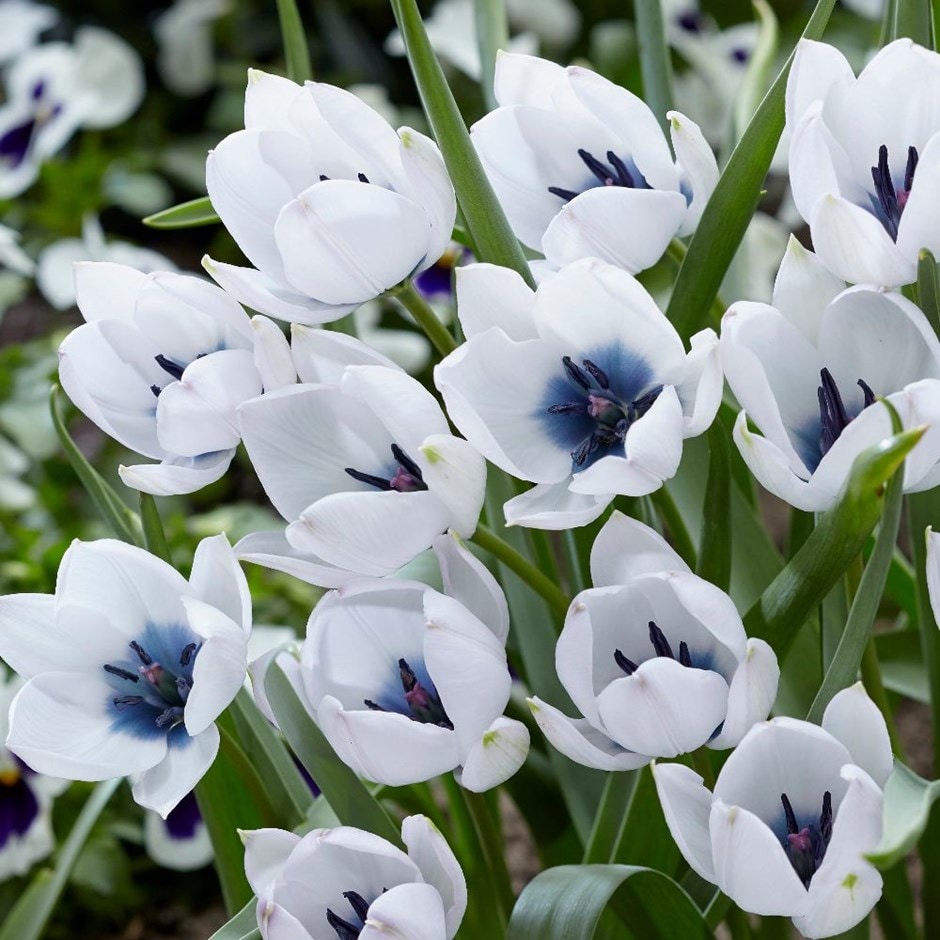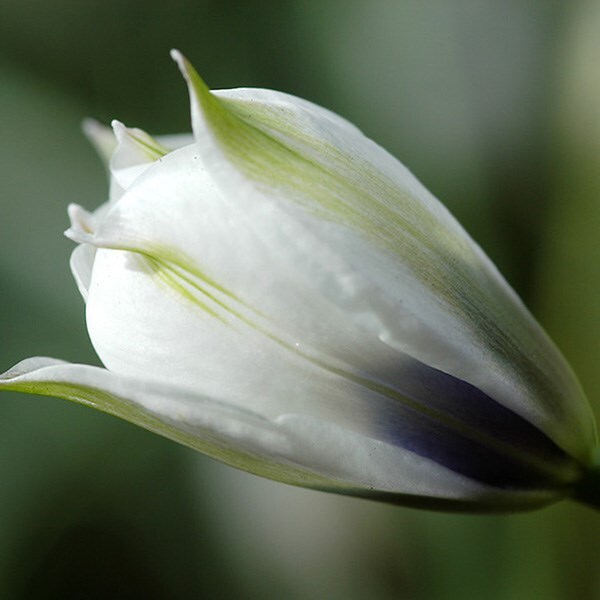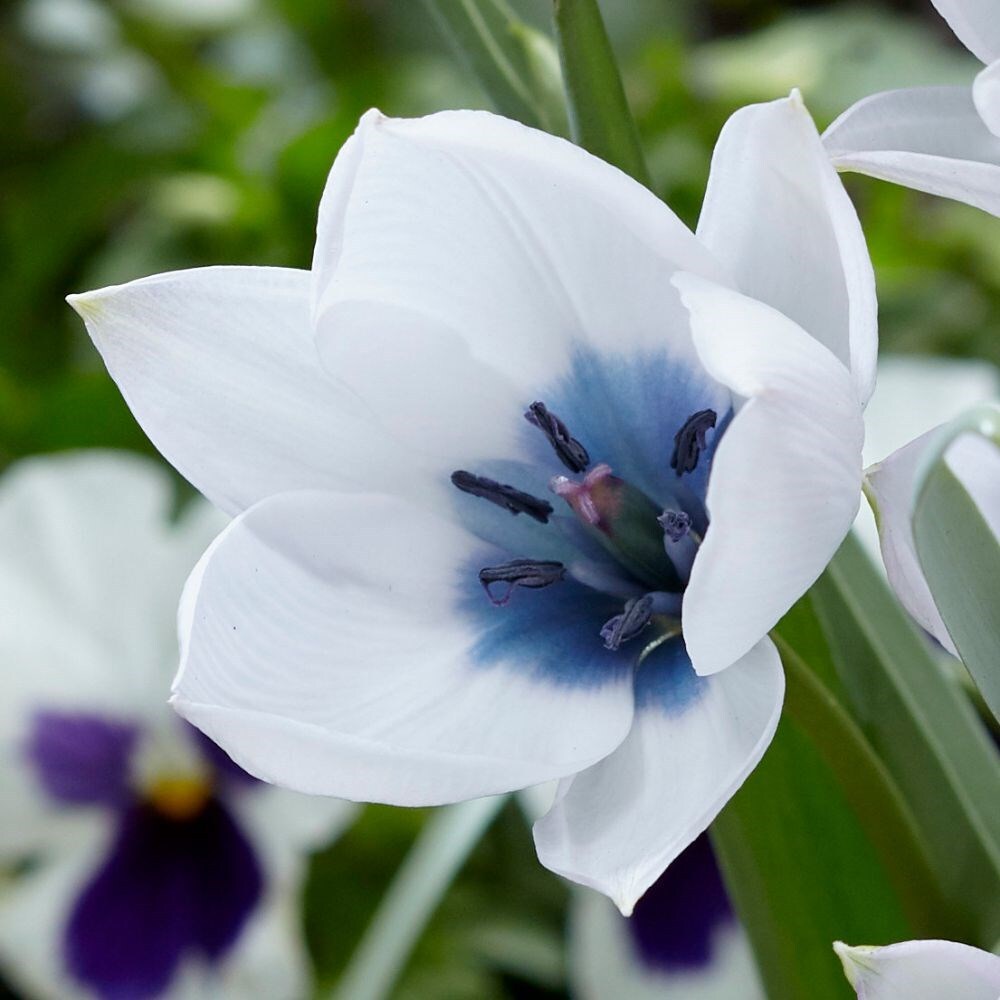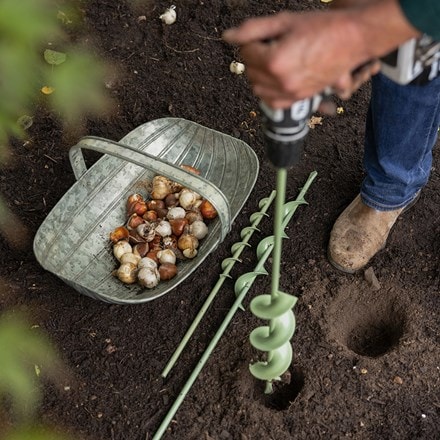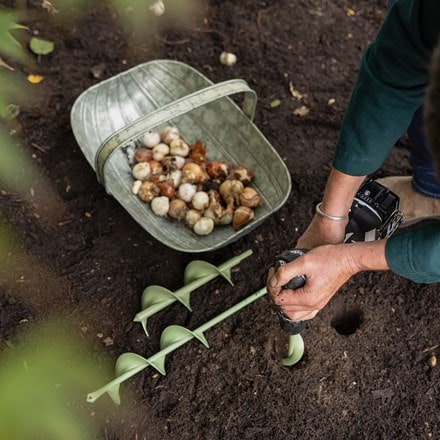Eventual height & spread
Tulipa humilis var. pulchella Albocaerulea Oculata Group
miscellaneous group tulip bulbs
- 5 × bulbs
- £11.99 £2.40 each
- available to order from summer
- 15 × bulbs
- £33.00 £2.20 each
- available to order from summer
Delivery options
- Bulbs (only) £4.99
- Position: full sun
- Soil: moderately fertile, moist but well-drained soil, or general-purpose potting compost for containers
- Rate of growth: average
- Flowering period: March to April
- Hardiness: fully hardy
- Bulb size: 5/-
Ideal for small spaces and connoisseurs, this dwarf tulip stands out with crisp white petals and a bold violet-blue centre. Reaching just 15cm (6in) tall, it flowers in early spring and naturalises well in gritty, free-draining soil.
The star-shaped blooms open wide in sunshine, revealing dark central stamens and a lightly scented display. Tulipa humilis var. pulchella Albocaerulea Oculata Group performs best in full sun, either in rock gardens, alpine troughs or grouped in pots. Like many species tulips, it returns reliably year after year if kept relatively dry in summer.
Avoid overwatering or planting in heavy, wet soils. Ideal for adding delicate contrast and colour to spring bulb schemes.
The star-shaped blooms open wide in sunshine, revealing dark central stamens and a lightly scented display. Tulipa humilis var. pulchella Albocaerulea Oculata Group performs best in full sun, either in rock gardens, alpine troughs or grouped in pots. Like many species tulips, it returns reliably year after year if kept relatively dry in summer.
Avoid overwatering or planting in heavy, wet soils. Ideal for adding delicate contrast and colour to spring bulb schemes.
These species tulips are adaptable for pot and border culture, as well as naturalising in meadows and wildflower schemes. Using fresh, good-quality compost, plant bulbs in pots from September to November. For borders, these tulips have some resistance to Tulip Fire and can be planted earlier in the autumn than other species, though a later planting after the first frosts (October) will reduce any risk. Plant bulbs 15-20cm (6-8in) deep and 10-15cm (4-6in) apart in fertile, well-drained soil. Alternatively, allow 7-9 bulbs per 30cm sq or 60-75 bulbs per m². If you’re unable to plant your bulbs immediately, they can be stored in a cool environment with good air circulation. Remove all the packaging and place them in a loose-weave jute sack before labelling and hanging up in a dry, unheated garden shed or well-ventilated greenhouse.
In spring, when the potted or border tulips are in active growth, apply a high-potash fertiliser (like Tomorite) each week until the leaves start to die back. Pinch off the spent flower heads as the petals fall, and let the stem and foliage die back naturally. Unlike border/bedding tulips, species tulips tulips can be left in the ground to flower in situ year after year.
If planting in a meadow in order to naturalise, make sure the grass is not cut until the foliage has completely died back.
In spring, when the potted or border tulips are in active growth, apply a high-potash fertiliser (like Tomorite) each week until the leaves start to die back. Pinch off the spent flower heads as the petals fall, and let the stem and foliage die back naturally. Unlike border/bedding tulips, species tulips tulips can be left in the ground to flower in situ year after year.
If planting in a meadow in order to naturalise, make sure the grass is not cut until the foliage has completely died back.
- Humans: Harmful if eaten; skin allergen; Pets: Ornamental bulbs - not to be eaten
